- Clone
- 23D2-3C6 (See other available formats)
- Regulatory Status
- RUO
- Other Names
- Homeobox Transcription Factor Nanog, Nanog Homeobox, Homeobox Protein NANOG, Homeobox Transcription Factor Nanog-Delta 48
- Isotype
- Mouse IgG1, κ
- Ave. Rating
- Submit a Review
- Product Citations
- publications
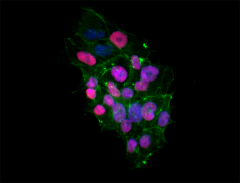
-

NCCIT cells were fixed with 1% paraformaldehyde (PFA) for ten minutes, permeabilized with 0.5% Triton X-100 for ten minutes, and blocked with 5% FBS for 30 minutes. Then the cells were intracellularly stained with 5 µg/ml anti-Nanog (clone 23D2-3C6) Alexa Fluor® 594 (red) in blocking buffer for three hours, followed by Phalloidin Alexa Fluor® 488 (green) staining for 20 minutes. Nuclei were counterstained with DAPI (blue). The image was captured with a 40X objective.
Nanog is a transcription factor that plays key roles in the maintenance of pluripotency and self-renewal in embryonic stem cells. Nanog expression is regulated by other transcription factors, which include Sox2 and Oct-4. It also plays a role in epithelial malignancy and is enriched in cancer stem cells. The ablation of nanog is sufficient to reduce the cancer stem cell pool.
Product DetailsProduct Details
- Verified Reactivity
- Human
- Antibody Type
- Monoclonal
- Host Species
- Mouse
- Immunogen
- Full length human recombinant protein expressed in bacteria
- Formulation
- Phosphate-buffered solution, pH 7.2, containing 0.09% sodium azide.
- Preparation
- The antibody was purified by affinity chromatography and conjugated with Alexa Fluor® 594 under optimal conditions.
- Concentration
- 0.5 mg/ml
- Storage & Handling
- The antibody solution should be stored undiluted between 2°C and 8°C, and protected from prolonged exposure to light. Do not freeze.
- Application
-
ICC - Quality tested
- Recommended Usage
-
Each lot of this antibody is quality control tested by immunocytochemistry. For immunocytochemistry, a concentration range of 0.1 - 10 μg/ml is recommended. It is recommended that the reagent be titrated for optimal performance for each application.
* Alexa Fluor® 594 has an excitation maximum of 590 nm, and a maximum emission of 617 nm.
Alexa Fluor® and Pacific Blue™ are trademarks of Life Technologies Corporation.
View full statement regarding label licenses - Application Notes
-
This clone is not recommended for ChIP (Chromatin Immunoprecipitation) assays (as determined by in-house testing).
- RRID
-
AB_2566439 (BioLegend Cat. No. 674004)
Antigen Details
- Structure
- 305 amino acids with a predicted molecular weight of approximately 35 kD.
- Distribution
-
Nuclear and cytoplasmic. Expressed by embryonic stem (ES) cells or cancer stem cells. Expression decreases with ES differentiation.
- Function
- Transcription regulator that plays key roles in the maintenance of pluripotency and self-renewal in embryonic stem cells.
- Interaction
- Interacts with SMAD1, SALL4, and ZNF281/ZFP281.
- Cell Type
- Embryonic Stem Cells
- Biology Area
- Apoptosis/Tumor Suppressors/Cell Death, Cell Biology, Cell Cycle/DNA Replication, Signal Transduction, Stem Cells, Transcription Factors
- Antigen References
-
1. Hwang CC, et al. 2014. PLoS One 9:e105676.
2. Torres-Padilla ME, et al. 2014. Development 141:2173.
3. Iv Santaliz-Ruiz LE, et al. 2014. Int. J. Cancer 12:2741.
4. Wang ML, et al. 2013. Onco. Targets Ther. 6:1207.
5. Kim J, et al. 2008. Cell 132:1049.
6. Takahashi K, et al. 2007. Nat. Protoc. 2:3081.
7. Yu J, et al. 2007. Science 318:1917. - Gene ID
- 79923 View all products for this Gene ID
- UniProt
- View information about Nanog on UniProt.org
Related FAQs
Other Formats
View All Nanog Reagents Request Custom Conjugation| Description | Clone | Applications |
|---|---|---|
| Purified anti-Nanog | 23D2-3C6 | WB,ICFC,ICC |
| Alexa Fluor® 594 anti-Nanog | 23D2-3C6 | ICC |
| Alexa Fluor® 488 anti-Nanog | 23D2-3C6 | ICC |
| Alexa Fluor® 647 anti-Nanog | 23D2-3C6 | ICFC |
Compare Data Across All Formats
This data display is provided for general comparisons between formats.
Your actual data may vary due to variations in samples, target cells, instruments and their settings, staining conditions, and other factors.
If you need assistance with selecting the best format contact our expert technical support team.
-
Purified anti-Nanog
Total cell lysate from NTERA-2 cells (lane 1, 15 µg), NF-1 c... 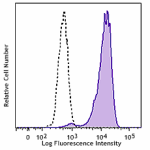
Human malignant pluripotent embryonal carcinoma cell line, N... 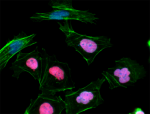
NTERA-2 cells were fixed with 4% paraformaldehyde (PFA) for ... -
Alexa Fluor® 594 anti-Nanog
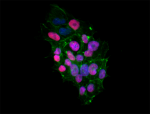
NCCIT cells were fixed with 1% paraformaldehyde (PFA) for te... -
Alexa Fluor® 488 anti-Nanog
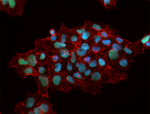
NCCIT pluripotent embryonal carcinoma cells were fixed with ... -
Alexa Fluor® 647 anti-Nanog
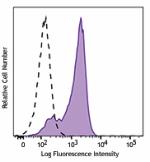
NTERA-2 cells were treated with the True-Nuclear™ Transcript...














Follow Us